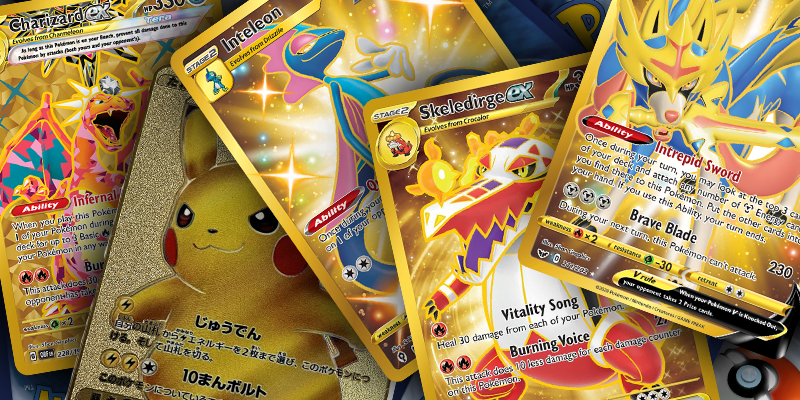The world of collectible cards is experiencing a paradigm shift, and it’s more electric than a jolting Thunder Shock from Pikachu. In the card-collecting universe, an evolution has taken place, and it’s a seismic one, seeing Pokémon cards ascend to digit-grading dominion. As of 2025, Pokémon cards have not merely entered the scene but taken it by storm, overshadowing the once-untouchable sports cards in the realm of grading submissions.
According to the latest data from GemRate, an analytical oracle for card grading trends, Pokémon has tipped the scales emphatically. Not a whimsical trend, but a bona fide surge that places it at the apex of grading submissions, with a staggering 97 out of the top 100 cards at PSA—the Professional Sports Authenticator—being from the beloved franchise. This year, trading card games (TCG) and non-sports cards such as these accounted for a solid 59% of all graded submissions across the top four authentication companies in the first half of the year, a testament to a shifting audience and renewed collector enthusiasm.
In raw numbers, this card-capturing presents itself as 7.2 million TCG and non-sports cards being graded from January to June alone—a whopping 70% spike compared to the previous year’s figures. Comparatively, sports card submissions look like they’re doing the limbo, slipping downward with a 9% decline and totaling 5.1 million. Suddenly, it seems that having a Pikachu is cooler than a rookie Michael Jordan, at least to the buzzing legion of modern fans.
Their affection extends to individual cards, with the Japanese Iono’s Wattrel Battle Partners Promo No. 232 soaring to the top of the charts with an eye-popping 45,600 copies graded. Yet, in this Pokémon world, there seems to be no competing with Pikachu, who continues to be the franchise’s certified champion. Over the year, over 345,000 graded impressions have been recorded, with a notable leader emerging—the now-iconic “Pikachu with Grey Felt Hat” from the Van Gogh Museum collaboration, reaching nearly 84,000 graded copies. Astonishingly, despite the card’s proliferation, gem mint PSA 10 examples can still fetch upwards of $900, highlighting a collector’s zeal that’s as persistent as it is lucrative.
In stark contrast, sports cards have scarcely made a mark amidst this Pokémon parade. Only three cards skidded into PSA’s top 100—two 2024 editions of Panini Prizm with Jayden Daniels featuring as a notable player, and a Panini Instant Caitlin Clark WNBA Rookie of the Year card. Each of these sports cards managed between 8,800 and 10,500 submissions, a tiny drop in the ocean next to the sea of Pokémon enthusiasm.
Further slicing the data from June offers demonstrated evidence of this growing trend. Non-sports and TCGs made up 63% of submissions, with PSA grading a massive 911,000 cards in this category during that month, dwarfing the combined sports card grading total of 743,000 across all four major companies. CGC Cards, riding this tremendous TCG tidal wave, has seemingly become synonymous with the Pokémon surge. They’ve graded 2.18 million cards thus far in 2025, nearly parallel to their entire output of 2024, with colossal 1.8 million of those being TCG or non-sports cards.
Meanwhile, the Beckett Grading Services arm of the industry appears to be navigating turbulent waters. Their volume of graded cards slipped, bumping them down to fourth rank amongst the grading giants. Out of the 366,000 cards they’ve ushered through the process in 2025, about 214,000 were Pokémon or TCG-related—ample evidence of their struggle to keep up.
Instrumental to this grading explosion is PSA’s strategic partnership with GameStop, launched in October. This alliance has seen over a million grading submissions flood in, turbocharging the boom and signifying the juggernaut impact of mainstream retail and brand collaborations on collectible card submissions.
Beyond the cozy confines of grader’s and collector’s inventory lists, Pokémon’s allure manifests physically, evident in retail phenomena characterized by emptying shelves, crowd-pleasing releases, and rationing strategies like limited-per-customer policies—no surprise given the never-ceasing demand.
As 2025 unfolds, Pokémon’s magnetic grip on the hobbyist world feels unassailable and could be seen as enduring as the franchise’s own timeline, suggesting that we are yet to see if any sports card can reverse the wild Pikachu-infused rollercoaster ride that has captivated not just collectors but investors too. Pokémon’s credentials in cultural and fiscal realms are firmly entrenched and, much like one of its in-game evolutions, it may yet transform its status again, to even grander scales. Whether you catch them all—or just one—is up to you, but the truth is undeniable: Pokémon cards have proven the prognosticators right, fueling dreams and investments in an allure that spans generations.

